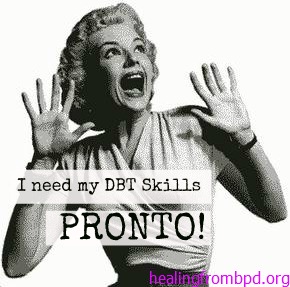It’s the emotions stupid
In “When Hope is Not Enough” I quote renown Buddhist monk Thich Nhat Hanh about anger. Here is the quote:
Anger is an unpleasant feeling. It is like a blazing flame that burns up our self-control and causes us to say and do things that we regret later. When someone is angry, we can see clearly that he or she is abiding in hell. Anger and hatred are the materials from which hell is made. A mind without anger is cool, fresh and sane. The absence of anger is the basis of real happiness, the basis of love and compassion.
…
When we are angry, we are not usually inclined to return to ourselves. We want to think about the person who is making us angry, to think about his hateful aspects – his rudeness, dishonesty, cruelty, maliciousness, and so on. The more we think about him, listen to him, or look at him, the more our anger flares. His dishonesty and hatefulness may be real, imaginary, or exaggerated, but, in fact, the root of the problem is the anger itself, and we have to come back and look first of all inside ourselves. It is best if we do not listen to or look at the person who is the cause of our anger. Like a fireman, we have to pour water on the blaze first and not waste time looking for the one who set the house on fire..
The thing is that many people, when overcome with emotions, have a tendency to focus on the situation and causes of the anger (who set the fire) vs. the anger itself. This reason is why I try to refocus non-borderlines on the emotions, not the “offense.” People typically defend against the accusations, rather than focus on the anger. Many skills can be applied to cool the anger, but defending is not one of them. Defending just fuels the flames.

Instead of defending, I encourage non-borderlines to use the I-AM-MAD communication skill. It’s been a while since I elaborated on that skill, so here it is in a nutshell:
I-AM-MAD
1. Identify the emotions.
It’s best to do this with “feeling” words, like “look”, “see”, or “sound”, rather than “know” or “understand”.
Examples: “I see that you are frustrated.”
“You sound aggravated.”
“You look really upset.”
2. Ask a validating question. Immediately – combine with step 1 to be most effective.
This encourages them to share their feelings about whatever triggered them. Do not use “what’s wrong?” If you use “what’s wrong?” they will hear “what’s wrong with YOU?” Also, don’t assume you did anything wrong. Remember, IAAHF (It’s All About His/Her Feelings).
Examples: “What happened?” (most effective because it is open-ended, requires more than yes/no answer)
“Did something go wrong at work [school] today?”
“Want to talk about it?”
3. Make a validating statement about their emotion.
Validate the feelings expressed in step 2. This helps reinforce that it is natural and valid to feel what they are feeling in the situation. Again, remember IAAHF. Don’t defend against blaming or projecting. And don’t apologize at this point, even if you are guilty. (Apologies for things you are actually guilty of can come later… after they have returned to their emotional baseline.)
Examples: “Wow, it must have made you feel awful to have done poorly on that test.”
“Yes, it is frustrating when it seems that someone is taking advantage of you.”
“Yeah, that’s really disappointing.”
4. Make a normalizing statement about their emotion.
By relating the situation as common to all people or “normal” for them, this helps alleviate their stress about feeling judged or unaccepted.
Examples: “I think anyone would feel angry if they had to do that”
“I would feel the same way if that happened to me.”
“I can see why you feel that way.”
5. Analyze the consequences of their behavior.
By examining the consequences of both negative and positive behavior with the person, you help them to separate their emotional reaction from their behavior. The behavior may need to be changed, but the emotions are natural and should not be punished for.
Examples: “When you don’t ask questions about something that confuses you, I don’t realize that you are struggling, so I can’t help you. When you do ask questions though, I can either give you the information you need to solve the problem yourself or we can work together to figure out the best solution to the problem.
“When you yell at me, I feel disrespected and become upset too. However, when you speak calmly to me, I know you have respect for me, so I am able to listen to you better.”
“When you refuse to talk to me, I don’t know what else to do except give you space. When something is bothering you, it’s best to be open and honest with me so I know what’s going on and don’t make the wrong assumptions about what you need.
6. Don’t solve the problem for them.
Solving one’s own problems helps to build self-confidence. Empower the person by getting them to come up with a solution themselves. When given the opportunity in a non-judgmental setting, most people will find that they can come up with solutions to their problems. You can guide them through this process by asking helpful questions to ascertain what they need or want.
Examples: “How would you like to handle this?”
“What would help you make a better choice next time?”
“Is there anything I can do to help?”
(Note: Sometimes you have to go back and forth to help them find the most effective solution. They may say, “I don’t know” or “I don’t care.” This can be tough. Go back to step one to deal with any additional emotions that become apparent.)



2 Comments
mandy
being rejected and abandoned by anyone to a borderline is like pouring salt on an open wound.Its more terrifying and painful than having both your legs sawn off.They will do literally anything to prevent that pain as death is preferable to that amount of pain.If a borderline is yelled and sworn at and thrown out of her home for ever,she’ll only repeat the same ‘test’of abandonment again and again with every next person in the hope of ever getting a different result.It’s a lifelong pattern trying to achieve love.
mandy
this stuff under the heading “Its the emotions stupid” is so kind.I’ve never experienced this level of kindness.It makes someone want to curl into a tight ball and cry their squeezed and broken heart out.I don’t know where this level of kindness and respect for humanity and loving care comes from,but I’m very grateful for it.SOMEONE actually understands and gives a crap.